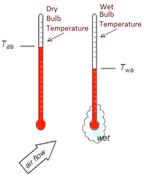
Accuracy vs. Precision: Understanding the Difference
This article explains the difference between accuracy and precision using definitions and a robot example.
Showing 20 posts (Page 1 of 4)
Advertisement

This article explains the difference between accuracy and precision using definitions and a robot example.

Explore the differences between accuracy and repeatability in measurements. Learn how they relate to each other and why both are essential for reliable results.

Understand the fundamental differences between active and passive instruments. Learn how they work and see examples of each type.
Explore the fundamental differences between active and passive sensors, including their working principles, applications, and advantages.

Explore the fundamental differences between active and passive transducers, including their power requirements, output signals, and examples.

Explore the benefits and drawbacks of digital multimeters (DMMs), essential tools for measuring voltage, current, and resistance in electronics.
Explore the benefits and limitations of electrical instruments, including non-contact measurements, low power consumption, and reliance on mechanical movement.
This article explores the pros and cons of mechanical instruments, discussing their durability, cost-effectiveness, and limitations in dynamic measurements.

Explore the pros and cons of using thermistors for temperature measurement, including sensitivity, linearity, and practical limitations.

Explore the pros and cons of weirs for flow management and measurement. Learn about their applications, design, and limitations.

A detailed comparison of analog and digital multimeters, highlighting their differences in display, accuracy, and functionality.

Explore the fundamental differences between analog and digital transducers, their working principles, and examples.

Explore the fundamentals of BGA packaging, including PBGA, CPBGA, CBGA, and TBGA types. Learn about their features, advantages, disadvantages, and applications.

Explore the differences between dead zone and dead time in instrumentation. Understand how these concepts affect measurement accuracy and reliability.

Understand the difference between depreciation and reflection factors in lighting design and how they impact light levels and efficiency.

Explore the benefits and limitations of digital sensors, including their high performance, ease of use, and potential drawbacks like complexity and cost.

Understanding the differences between dry bulb temperature, air temperature, and dew point, and how they relate to humidity.

Explore the difference between dry and wet bulb temperatures, their measurement methods, and their significance in understanding air moisture content.
Explore the differences between dynamic and kinematic viscosity, their formulas, units, and relationship to fluid density and flow.

This article differentiates between EMC and EMI measurements, explaining their scope, testing methodologies, and relevant standards like CISPR 16 and MIL-STD-461.
Advertisement